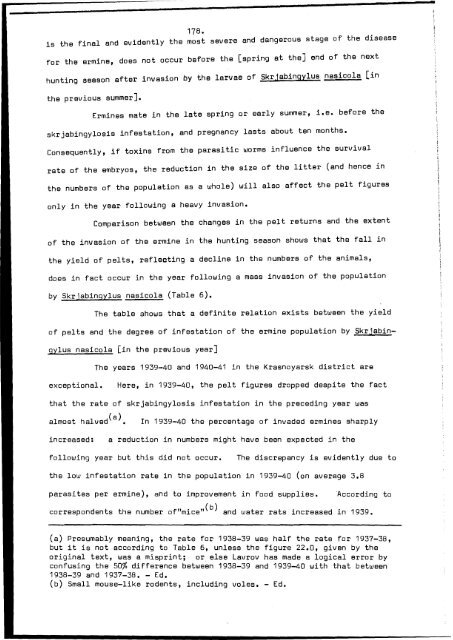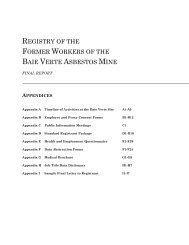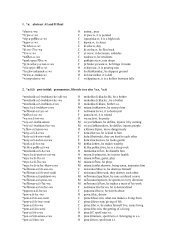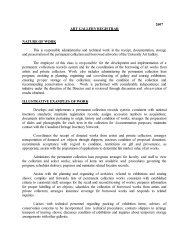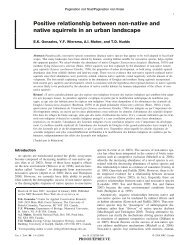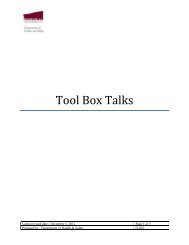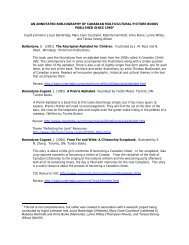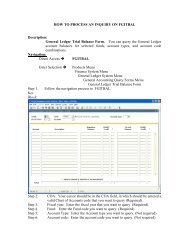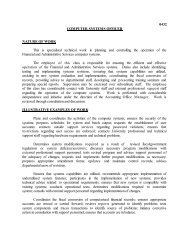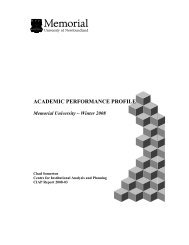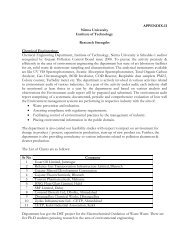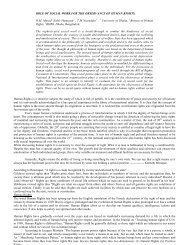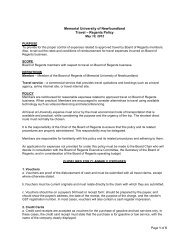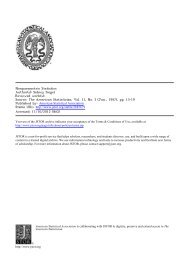Create successful ePaper yourself
Turn your PDF publications into a flip-book with our unique Google optimized e-Paper software.
•<br />
178.<br />
is the final and evidently the most severe and dangerous stage <strong>of</strong> the disease<br />
for the ermine, does not occur before the [spring at the] end <strong>of</strong> the next<br />
hunting season after invasion by the larvae <strong>of</strong> Skr.1abingylus nasicola [in<br />
the previous summer].<br />
Ermines mate in the late spring or early summer, i.e. before the<br />
skrjabingylosis infestation, and pregnancy lasts about ten months.<br />
Consequently, if toxins from the parasitic worms influence the survival<br />
rate <strong>of</strong> the embryos, the reduction in the size <strong>of</strong> the litter (and hence in<br />
the numbers <strong>of</strong> the population as a whole) will also affect the pelt figures<br />
only in the year following a heavy invasion.<br />
Comparison betwean the changes in the pelt returns and the extent<br />
<strong>of</strong> the invasion <strong>of</strong> the ermine in the hunting season shows that the fall in<br />
the yield <strong>of</strong> pelts, reflecting a decline in the numbers <strong>of</strong> the animals,<br />
does in fact occur in the year following a mass invasion <strong>of</strong> the population<br />
by Skrjabingylus nasicola (Table 6).<br />
The table shows that a definite relation exists between the yield<br />
<strong>of</strong> pelts and the degree <strong>of</strong> infestation <strong>of</strong> the ermine population by Skr.1abin<br />
Qylus nasicola [in the previous year]<br />
The years 1939-40 and 1940-41 in the Krasnoyarsk district are<br />
exceptional.<br />
Here, in 1939-40, the pelt figures dropped despite the fact<br />
that the rate <strong>of</strong> skrjabingylosis infestation in the preceding year was<br />
almost halved(a).<br />
In 1939-40 the percentage <strong>of</strong> invaded ermines sharply<br />
increased:<br />
a reduction in numbers might have been expected in the<br />
following year but this did not occur.<br />
The discrepancy is evidently due to<br />
the low infestation rate in the popUlation in 1939-40 (on average 3.8<br />
parasites per ermine), and to improvement in food supplies.<br />
'According to<br />
correspondents the number <strong>of</strong>"miceH(b) and water rats increased in 1939.<br />
(a) Presumably meaning, the rate for 1938-39 was half the rate for 1937-38,<br />
but it is not according to Table 6, unless the figure 22.0, given by the<br />
original text, was a misprint; or else Lavrov has made a logical error by<br />
confusing the 50% difference between 1938-39 and 1939-40 with that between<br />
1938-39 and 1937-38. - Ed.<br />
(b) Small mouse-like rodents, including voles. - Ed.


